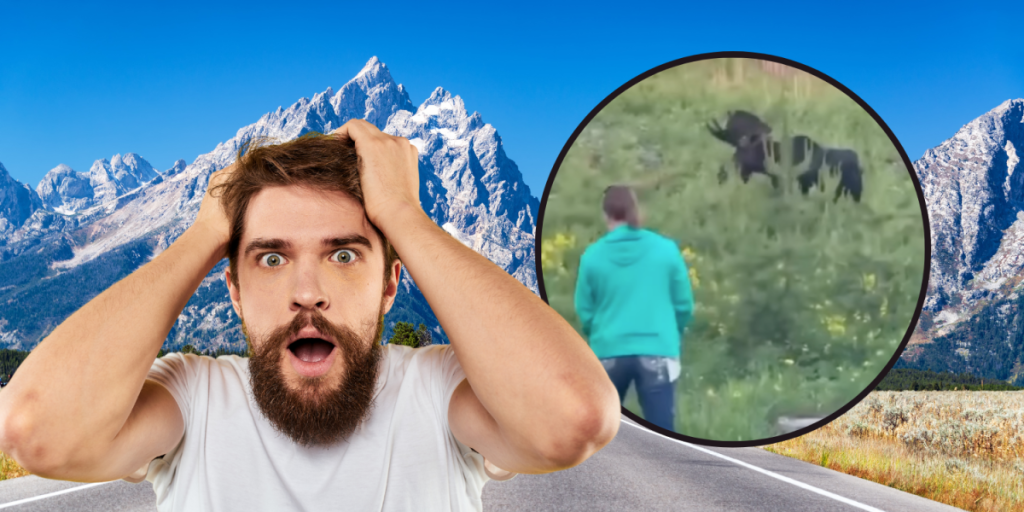A man captured a video of his wife attempting to pet a moose at a national park despite his warnings to keep away for the animal.
“This is proof, for the doctors, of what her bodily injuries are from,” said the man while capturing the video, who was also standing too close to the moose. “This is ‘what not to do’ video, folks.”
In the clip below, most likely captured in Grand Teton National Park or Yellowstone National Park, was shared on social media by TouronsOfNationalParks. The platform is dedicated to showcasing bad behavior in national parks.
Similar behavior caused the National Park Service to issue a warning about keeping distance from elk, especially this time of year.
In the Greater Yellowstone Ecosystem, there are roughly 800 moose. Being able to spot one while exploring northwest Wyoming is a highlight of any trip, but it is very important to remember that moose are large, wild, powerful, and unpredictable animals. It is crucial for your safety to give wildlife space and respect. They may appear docile , but their behavior can change rapidly.
Moose can run up to 35 mph, and trot steadily at 20 mph. Humans cannot outrun a moose, which is why it is so important to give them plenty of space.
The National Park Service recommends maintaining a distance of at least 25 yards for moose, elk, and bison, and a minimum of 100 yards for bears and wolves. It is also important to never chase or approach wildlife.
“Do not harass wildlife,” warns the National Park Service. “Harassment is any human action that causes unusual behavior, or a change of behavior, in an animal. Repeated encounters with people can have negative, long-term impacts on wildlife, including increased levels of stress and the avoidance of essential feeding areas.”
For more information about how to stay safe while visiting National Parks, including practical advice on how to view wildlife safely, visit the National Park Service website.










